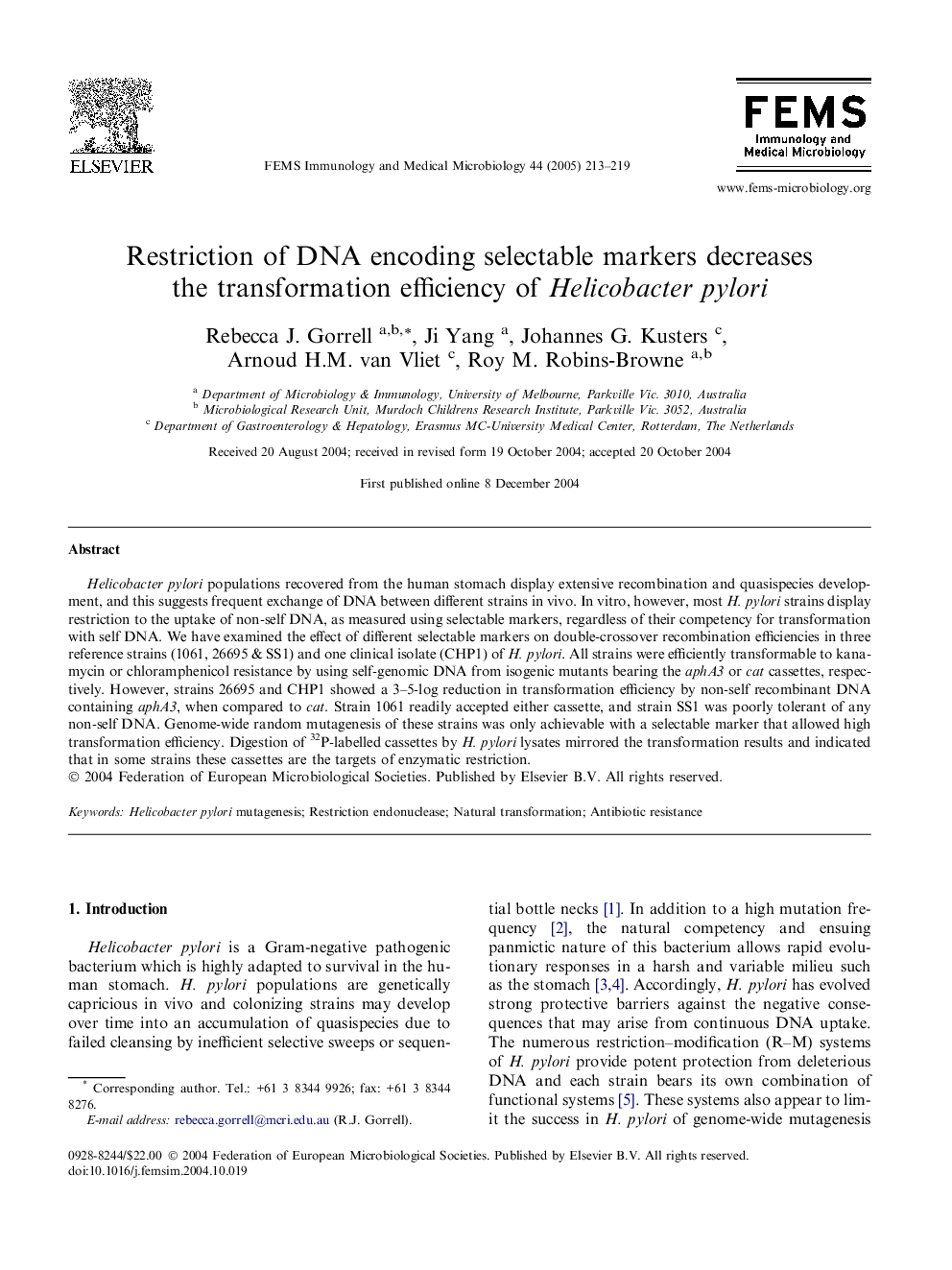| Article ID | Journal | Published Year | Pages | File Type |
|---|---|---|---|---|
| 9278061 | FEMS Immunology and Medical Microbiology | 2005 | 7 Pages |
Abstract
Helicobacter pylori populations recovered from the human stomach display extensive recombination and quasispecies development, and this suggests frequent exchange of DNA between different strains in vivo. In vitro, however, most H. pylori strains display restriction to the uptake of non-self DNA, as measured using selectable markers, regardless of their competency for transformation with self DNA. We have examined the effect of different selectable markers on double-crossover recombination efficiencies in three reference strains (1061, 26695 & SS1) and one clinical isolate (CHP1) of H. pylori. All strains were efficiently transformable to kanamycin or chloramphenicol resistance by using self-genomic DNA from isogenic mutants bearing the aphA3 or cat cassettes, respectively. However, strains 26695 and CHP1 showed a 3-5-log reduction in transformation efficiency by non-self recombinant DNA containing aphA3, when compared to cat. Strain 1061 readily accepted either cassette, and strain SS1 was poorly tolerant of any non-self DNA. Genome-wide random mutagenesis of these strains was only achievable with a selectable marker that allowed high transformation efficiency. Digestion of 32P-labelled cassettes by H. pylori lysates mirrored the transformation results and indicated that in some strains these cassettes are the targets of enzymatic restriction.
Related Topics
Life Sciences
Immunology and Microbiology
Immunology
Authors
Rebecca J. Gorrell, Ji Yang, Johannes G. Kusters, Arnoud H.M. van Vliet, Roy M. Robins-Browne,
